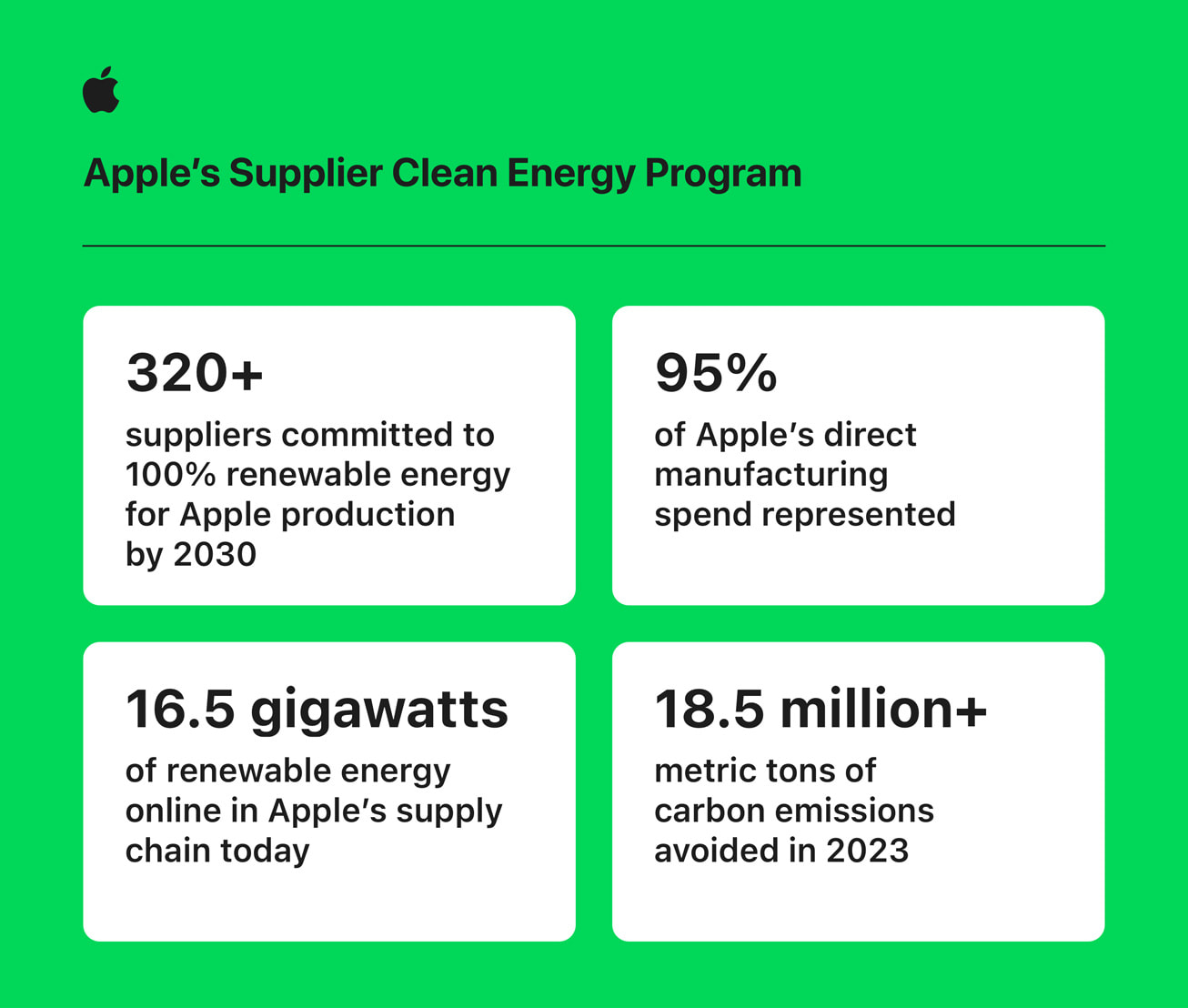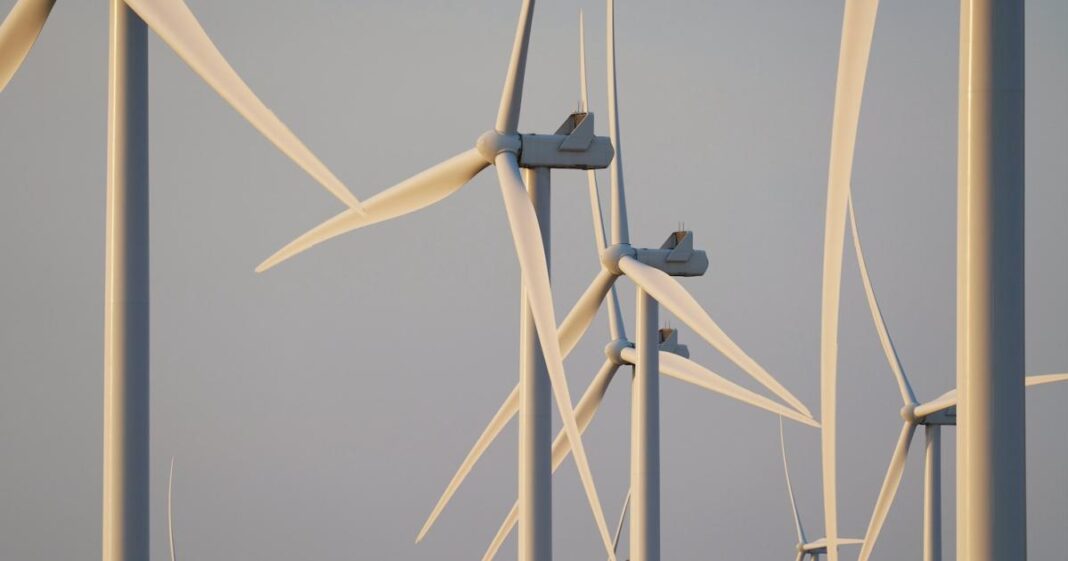Apple has reduced its greenhouse gas emissions by 55 percent since 2015, an achievement made possible largely because of its successful work to convince manufacturing partners to use renewable energy for Apple-related production.
For 2015, its baseline year, Apple reported 38.4 million metric tons of carbon dioxide equivalent across Scopes 1-3. That number is now 16.1 million metric tons of emissions, according to its 2024 Environmental Progress Report, published April 18. Apple’s goal is to reduce emissions by 75 percent across both its operations and those of its partners by 2030 and to use carbon removal approaches to abate the remaining 25 percent. By 2050, the company seeks to cut emissions by 90 percent compared with 2015.
Big cuts in supply chain emissions
So far, 320 Apple suppliers have committed to using carbon-free electricity for 100 percent of their production by 2030 — representing 95 percent of the company’s direct manufacturing spend, the company said in a separate update this week. Emissions from Apple’s manufacturing supply chain account for 65 percent of its “comprehensive” carbon footprint, according to the company’s annual green bond impact report for fiscal year 2023.
Suppliers sourced approximately 25.5 million megawatt-hours of clean electricity last year, which avoided more than 18.5 million metric tons of greenhouse gas emissions.
Apple’s fund to spur solar and wind development in China, launched in 2018, has supported the addition of 1 gigawatts of capacity across 14 provinces. Those facilities will produce more than 2,400 gigawatt-hours of electricity annually, which represents the energy consumption of more than 2.5 million people in China.

Apple’s green bond spend
The emissions reductions have benefited from the more than $4.7 billion Apple has raised through three separate green bonds since 2016 — it has allocated $3.4 billion of that amount to supply chain electricity investments. During FY 2023, the company spent $157.7 million of those proceeds on 11 projects. Here’s the breakdown, in descending order:
- Renewable energy ($93.7 million): Including a 320-megawatt solar installation in Brown County, Texas, and several projects in Michigan intended to offset the electricity related to Apple product use.
- Carbon sequestration ($31 million): Initial forest conservation and habitat restoration projects are expected to remove 1 million metric tons of carbon dioxide a year starting in 2025, and the company is investing in a new portfolio of nature-based solutions to double that amount.
- Low-carbon design ($30.7 million): Mainly research and development that will improve the purity of materials Apple is recovering with electronics recycling activities. In its new environmental progress report, Apple said 56 percent of the cobalt in Apple batteries now comes from recycled material, double the previous years. Approximately one-quarter of the lithium it uses in batteries is recycled.
- Carbon mitigation and energy efficiency ($2.1 million): Including energy efficiency and other emissions abatement.
7 billion gallons in new ‘water benefits’
Apple also announced new projects meant to replenish water and restore water quality for 6.9 billion gallons of water over the next 20 years.
They include an investment to restore a floodplain on 750 acres at the confluence of the Sacramento River, Feather River and Butte Creek; and a wildfire protection program centered on thinning and protecting more than 30,000 acres of forests at risk in the Colorado River Basin. Apple’s investment is the largest yet for the latter project.
Apple previously committed more than $8 million to projects in “high stress” locations where it operates, including Northern and Southern California, Arizona and in the Indian states of Telangana and Maharashtra.
The replenishment and restoration efforts complement Apple’s Supplier Clean Water program, which has saved 76 billion gallons since 2013.
Shipping, manufacturing key to future reductions
To get to 75 percent of emissions reduced, one focus will be transportation and logistics: Apple cut its footprint related to those activities 20 percent in FY 2023, in part by doubling the tonnage shipped by ocean. It will increase that volume by consolidating factory shipments from ports in Asia and exploring the increased use of alternative fuels and electric vehicles.
Another priority is addressing fluorinated greenhouse gases used in semiconductor and display manufacturing. Its efforts there resulted in a reduction of 2.7 million metric tons of carbon dioxide equivalent for 2023, and the company says it is engaging with industry coalitions to accelerate sector-wide progress.
